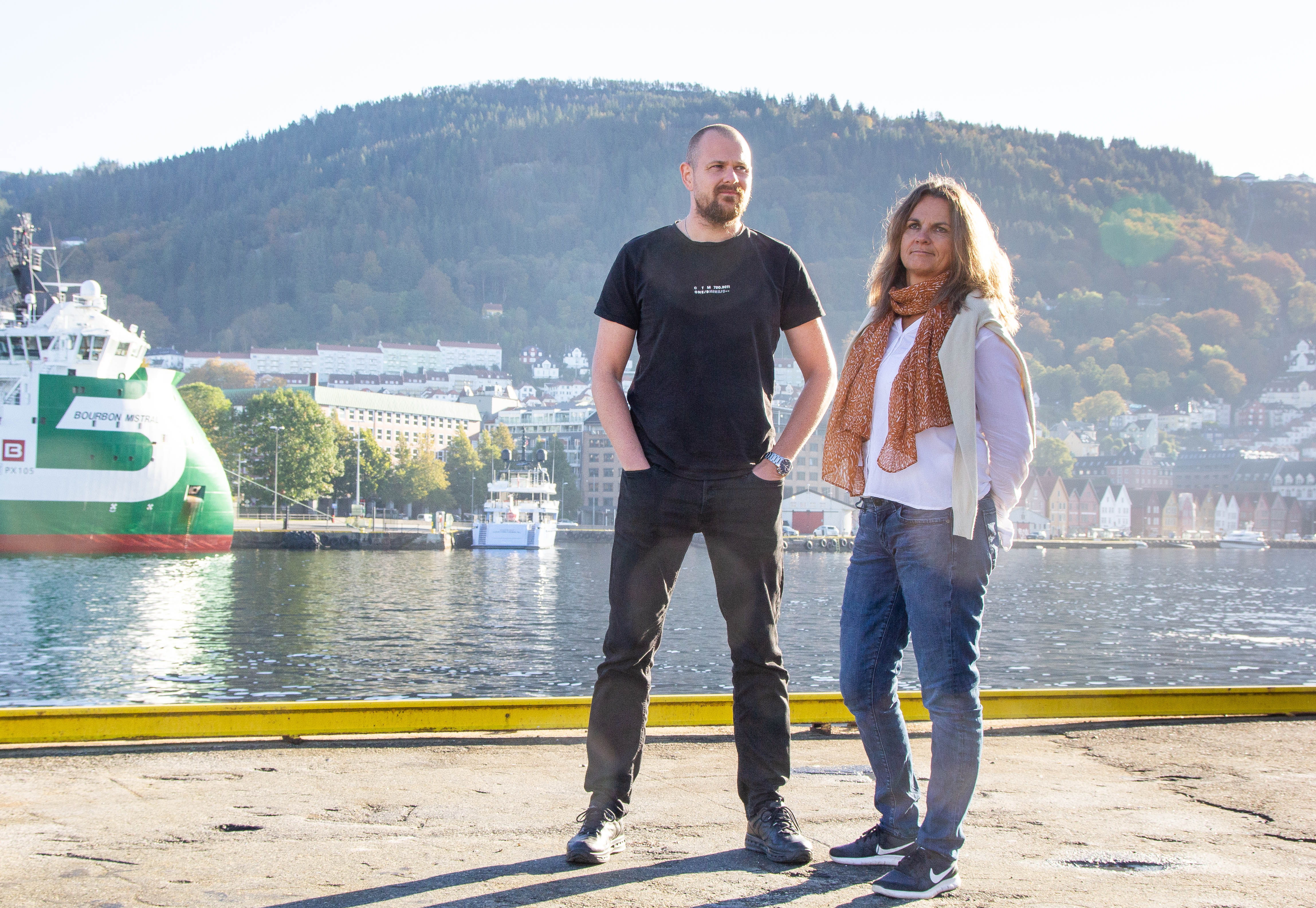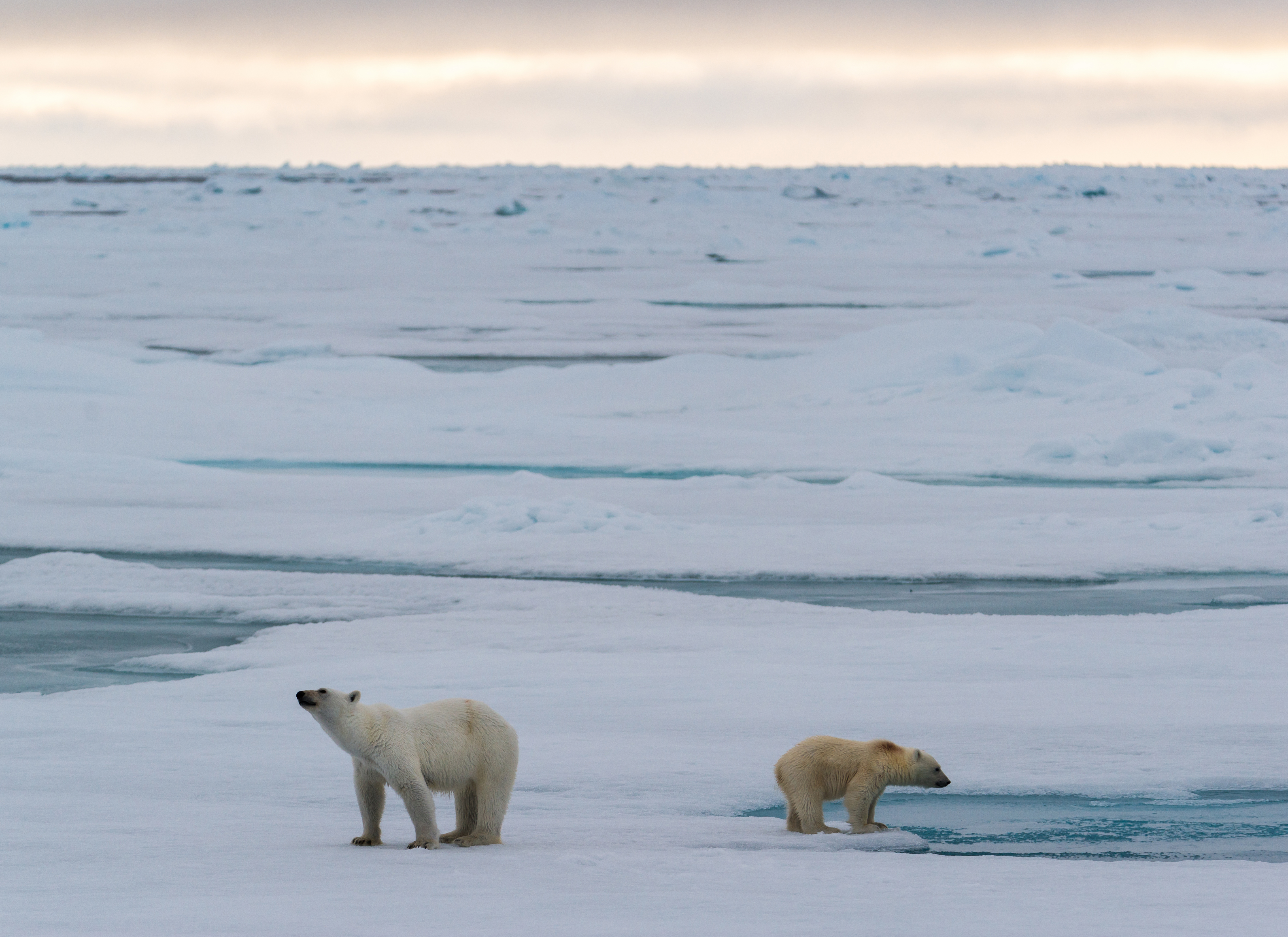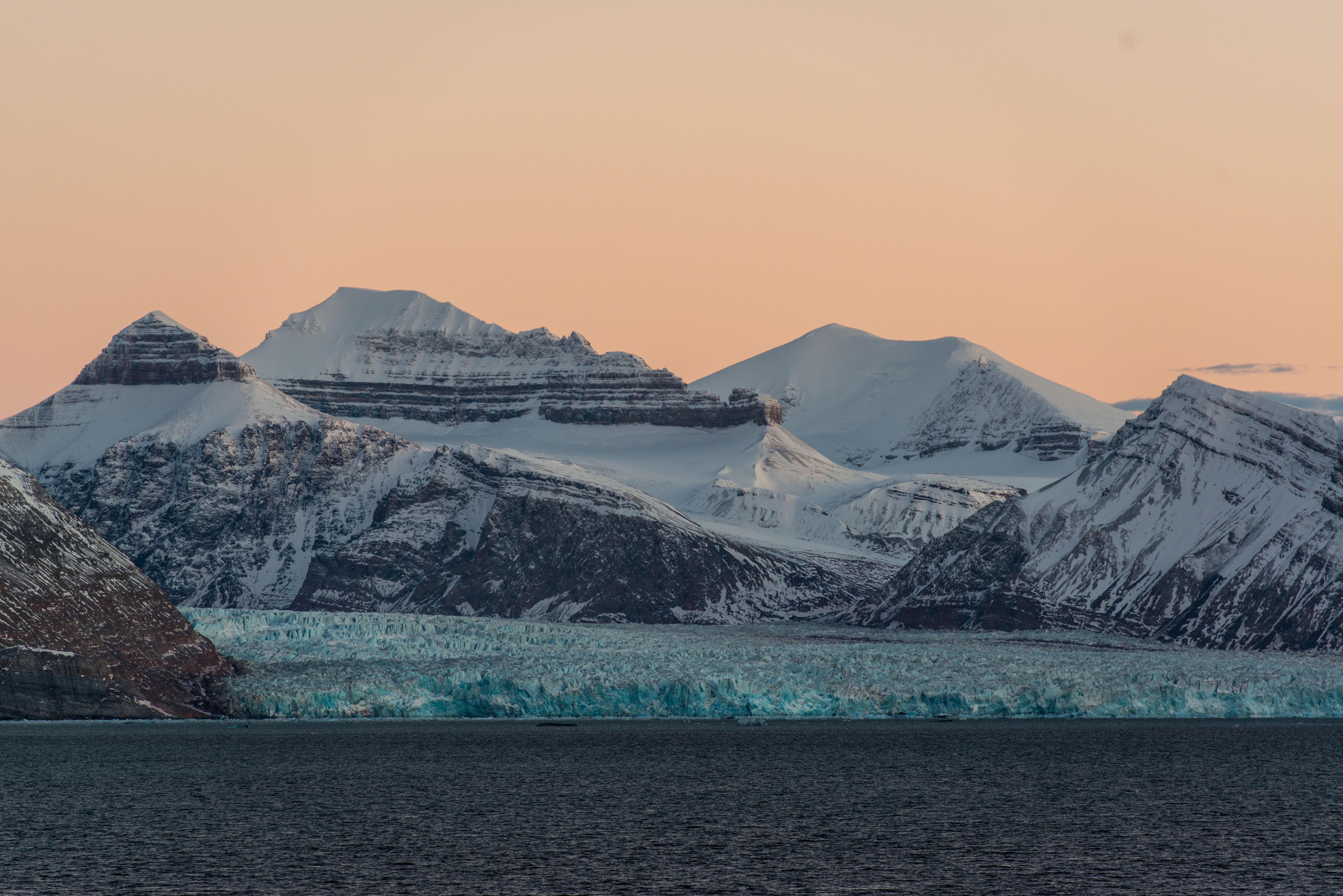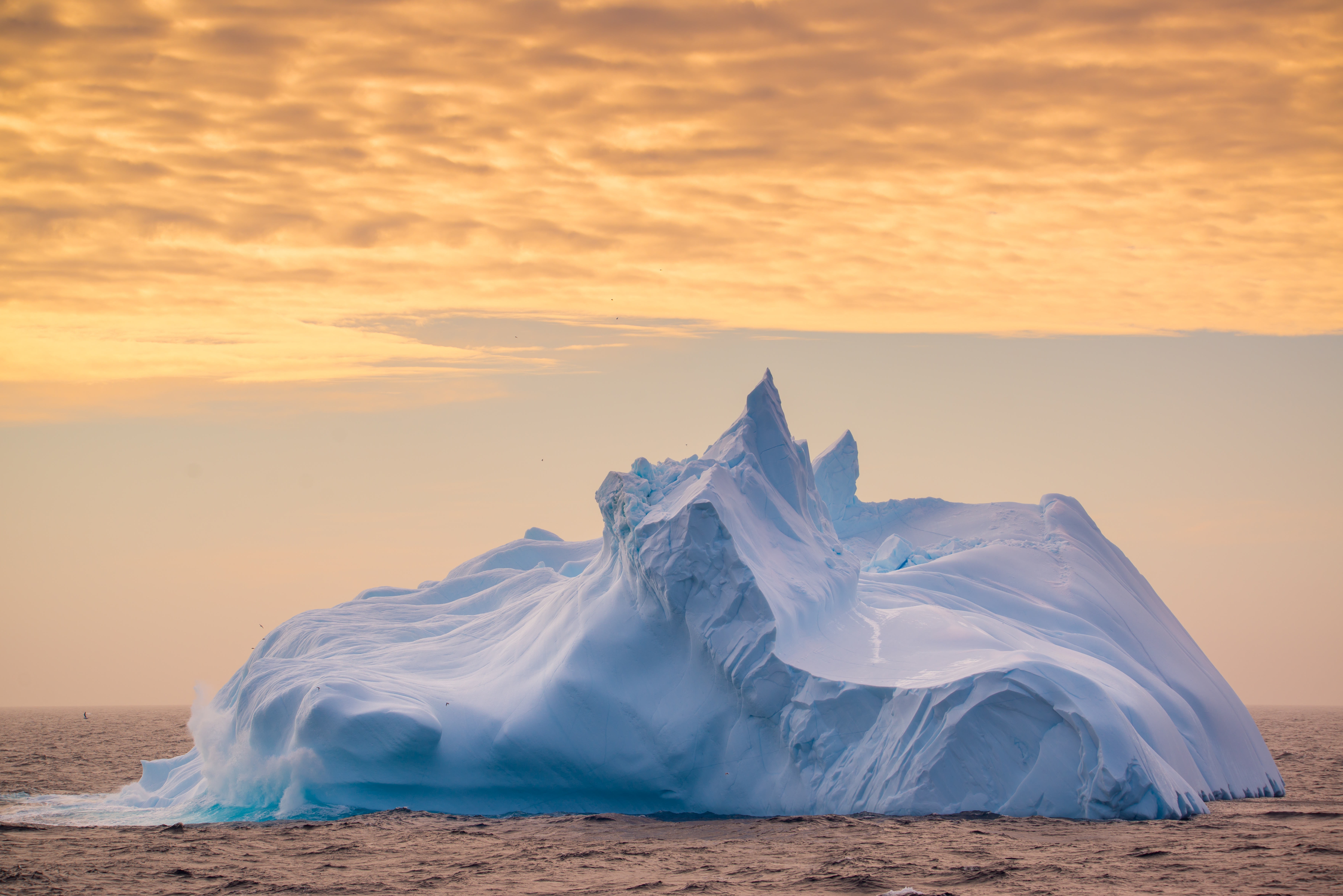10 things you didn’t know about ice

The giant ice caps in Antarctica give the researchers a peek into how the climate was hundreds, thousands and millions of years ago
Photo: Andreas Wolden / Institute of Marine ResearchPublished: 25.09.2019 Updated: 14.10.2019
Ice is water in its solid form, but it’s also important to our planet. Here climate scientists Anne Britt Sandø and Vidar Lien explain some of the secrets of ice.
1. Frozen water, carbon dioxide and nitrogen
This may seem like a banal question, but why is there ice on Earth?
“Because temperatures fall below zero degrees Celsius. After all, there’s no ice on Mercury and Venus”, says Lien.
“And because we have water”, adds Sandø.
“Yes, of course. There are planets and moons with dry ice, in other words frozen carbon dioxide. And on Triton, Neptune’s biggest moon, nitrogen freezes solid due to temperatures that reach well below minus 200 degrees Celsius. It’s really fascinating that we’re in the exact temperature range where we have water in its solid, liquid and gaseous forms”, says Lien.

2. Two types of ice on Earth
There are two types of ice on Earth: What scientists call land ice consists of fresh water, whereas sea ice is made of salt water.
“The salt in the sea ice is gradually eliminated. So new sea ice contains lots of salt, whereas old sea ice is quite fresh”, says Lien.
What happens inside the ice is that the salt is compressed into pockets with very high salinity. Eventually these pockets start melting, and the brine creates small channels in the ice before finally flowing out of the ice. As a result, the sea ice becomes fresher and fresher. New sea ice may have a salt content of over two percent salt, whereas in seawater it is typically 3-3.5 percent”, explain the researchers.
“The salt content of old sea ice is less than one percent”, says Lien.
3. Salt affects physical properties
The salt it contains means that seawater behaves differently from fresh water.
“The rule of thumb is that sea water usually freezes at around minus 1.8 degrees Celsius, whereas most people knows fresh water freezes at zero degrees”, says Sandø.
In Antarctica, however, there is seawater at minus 2.2 degrees under the ice shelf, in other words the part of the ice that extends out into the sea.
“Where the ice reaches into the sea, there is seawater between the ice and the sea floor hundreds of metres below sea level. Due to the pressure, the water doesn’t freeze until it is colder than minus two degrees Celsius”, says Lien.
Another difference between fresh water and seawater is their weight. Or more specifically, the way in which temperature affects their weight.
“Whereas fresh water is heaviest at plus four degrees Celsius, seawater just gets heavier and heavier as it approaches its freezing point. So, whereas in a lake the temperature can be four degrees at the bottom and zero degrees on the surface, the coldest seawater is on the sea floor”, says Lien.

4. Melts out in Antarctica, but survives the summer in the Arctic
Around ten percent of the world’s land surface and approximately seven percent of its oceans are covered by ice, say the climate scientists. Antarctica and the Arctic are, unsurprisingly, the places with most ice, but they are not just polar opposites geographically.
“Antarctica is a large continent surrounded by the ocean, whereas the Arctic is a large ocean surrounded by continents”, says Lien.
This means that the world’s southernmost continent has an enormous amount of ice on land, as well as sea ice in winter.
“The sea ice spreads out from the coast and eventually covers huge areas. Over ten million square kilometres of ice freezes in winter and melts in the summer”, says Lien.
In the Arctic, the sea ice often survives the summer, and becomes a few years old before melting.
“But this multiyear ice, as we call it, is getting younger and younger. It is becoming thinner and thinner, and more and more of it is melting”, says Sandø.
5. The oldest ice on the planet
The Earth’s southernmost continent has an extra layer of “insulation”, which keeps it cold.
“Antarctica has ocean currents and winds that circle around the continent, which mean that it is quite isolated. That keeps it cold”, says Lien.
This is one of the reasons why the oldest ice is found on Antarctica. It is also where the thickest, slowest-moving ice is found.
“The ice you find at the bottom of the ice sheet on Antarctica is around a million years old. The oldest ice core that has been extracted there is 800,000 years old, whereas the oldest ice in Greenland is around 100,000 years old”, says Lien.
6. Ice is a window to the past
The thing that makes glaciers and ice caps grow is snow. But Antarctica is very dry, with little snowfall.
“So not much is added to the top of its ice sheet, whereas Greenland receives more snowfall”, says Lien.
Climate scientists are using the deep ice sheets on Antarctica and Greenland to help them understand the climate in the past. By drilling deep down, they can reach ice that fell as snow hundreds, thousands and millions of years ago. And by analysing that ice, scientists can learn what the climate was like then, and how it has changed.
Since there is so little snowfall on Antarctica, one millimetre or one centimetre covers quite a long time period, whereas in Greenland each layer covers a shorter period.
“So, in a way we can see climate events in high resolution in Greenland, whereas Antarctica gives us a long-term perspective, but with less detail”, says Lien.

7. The snowball Earth
Over the Earth’s history, there have been big variations in its climate – and in the amount of ice.
“A few hundred million years ago there was what is known as the ‘snowball Earth’, when the whole planet was covered in ice. So at that point it was cold”, says Lien.
The planet has also had some ice-free periods.
“During these periods, it has been so warm that the ice caps have melted. This is related to the fact that Antarctica hasn’t always been located where it is today”, he explains. Antarctica used to be further north.
“During those periods it was so warm that the seawater didn’t freeze over, even at the poles”, says Lien.
8. The engine driving the ocean currents
Ice has a big impact on our climate, explain the two climate scientists.
“Melting ice forms the heavy water that is part of the engine that drives the world’s biggest ocean currents”, says Lien.
Seawater that is more saline and colder is also heavier. When cold, salty water is pushed out of the sea ice in the Arctic, it sinks to the bottom. In addition, the salty water from the Gulf Stream cools down when it reaches the Arctic. Consequently, both the water from the Gulf Stream and the salty melted ice sink to the bottom of the ocean and return to the Atlantic. This is called the thermohaline circulation.
9. Reflects 90 percent of the sunlight
Ice plays another important role in the climate, due to its ability to reflect sunlight, or its albedo, as scientists call it. It is basically all about how much sunlight is reflected and how much is absorbed as heat.
“If I’m wearing a black T-shirt, it has a very low albedo, so it absorbs all of the sunlight and gets incredibly hot and uncomfortable on a warm summer’s day”, says Lien.
A white T-shirt or white ice, on the other hand, reflects most of the heat. Ice reflects 90 percent of sunlight, while the sea only reflects ten percent of it.
“That means the oceans will warm up much more in summer if the ice disappears”, says Sandø.

In the winter, the ice acts as an insulating layer, so the oceans don’t lose as much heat. In extreme cases in the Arctic, at temperatures of minus 30 and in stormy weather, the heat loss without a layer of ice can be enormous.
“It can be the equivalent of one oven per square metre. In other words, up to 1000 watts of heat loss per square metre from the sea. But if there is ice cover, the heat loss is much smaller. Then it’s just a few watts per square metre”, says Lien.
10. The Greenland ice sheet affects Earth’s gravity
In discussions of global warming, it is often mentioned that the sea level will rise by seven metres if the ice on Greenland melts. However, that sea level rise won’t be evenly distributed around the world. Ironically, the melting of the Greenland ice sheet will cause more sea level rise in the Southern Hemisphere.
“That is because the ice attracts water by gravity. Just like the Moon attracts water”, says Sandø.
All masses exert a force of gravity, but the Greenland ice sheet is such a large proportion of the Earth that it makes a noticeable contribution. It pulls seawater towards the North Atlantic and Greenland. If the ice on Greenland disappears, that force of attraction will also disappear.
“So when the ice on Greenland disappears, the water in the Northern Hemisphere will no longer be attracted to Greenland in the same way as it is today. In principle, the water that melts will be pulled by the other big gravitational force, which is exerted by the ice in Antarctica, assuming it hasn’t melted”, says Sandø.
However, that won’t happen for a long time.
“The ice on Greenland will take thousands of years to melt at the current rate. Antarctica will take even longer, if it melts at all”, says Lien.
